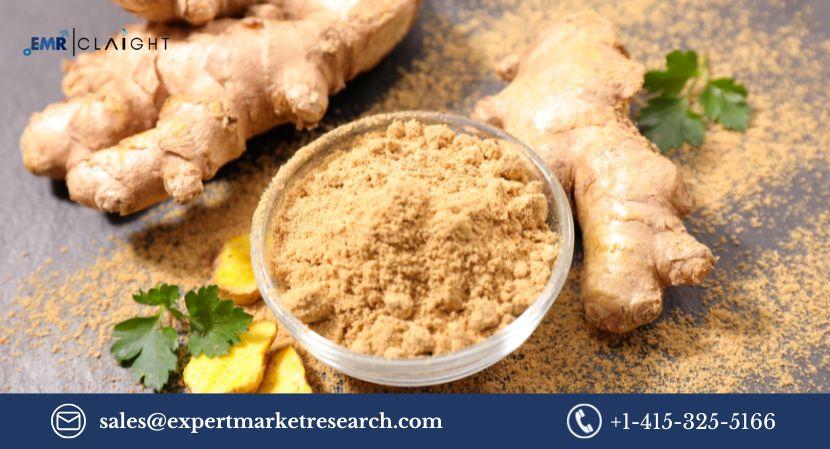Ginger Processing Market: Growth, Trends, and Opportunities

The ginger processing market is set to experience significant growth over the next decade. Valued at nearly USD 3.07 billion in 2024, the market is expected to expand at a robust compound annual growth rate (CAGR) of 8.2% between 2025 and 2034. By 2034, the market is projected to reach a value of USD 6.28 billion. This growth is driven by increasing consumer demand for ginger-based products, rising awareness of health benefits, and expanding application across various industries. In this article, we will provide an in-depth analysis of the ginger processing market, exploring its size, dynamics, trends, growth prospects, and competitive landscape.
Global Ginger Processing Market Overview
Ginger processing refers to the conversion of raw ginger into products such as ginger powder, dried ginger, ginger oil, ginger paste, and other processed forms that are used in a variety of industries including food and beverages, pharmaceuticals, cosmetics, and personal care. Ginger, a tropical plant cultivated primarily in India, China, and other Southeast Asian regions, has long been valued for its medicinal properties and culinary uses.
As demand for natural ingredients continues to rise, the global ginger processing market is poised to benefit from the growing trend of healthy living and natural food products. With its significant health benefits, including anti-inflammatory, digestive, and antioxidant properties, ginger is being increasingly incorporated into various food items, dietary supplements, beverages, and even skincare formulations.
Key Factors Driving Growth in the Ginger Processing Market
- Rising Consumer Awareness: Consumers are increasingly aware of the health benefits of ginger, driving demand for ginger-based products.
- Expansion of Functional Foods: The increasing popularity of functional foods, which offer health benefits beyond basic nutrition, is boosting ginger consumption.
- Growing Demand for Natural Ingredients: With the rising trend towards natural and organic products, ginger is seen as a healthier alternative to synthetic ingredients in various sectors.
- Increased Adoption in Pharmaceuticals: Ginger’s medicinal properties are contributing to its widespread use in the pharmaceutical industry for treatments related to digestion, nausea, and inflammation.
Market Segmentation by Product Type
The ginger processing market can be segmented into several product categories:
- Ginger Powder: One of the most common forms of processed ginger, widely used in cooking, baking, and in supplements.
- Ginger Oil: Extracted from ginger roots, ginger oil is used in various health and beauty products due to its anti-inflammatory properties.
- Dried Ginger: This product is used in traditional medicines and as a spice in the culinary world.
- Ginger Paste: Used mainly in food preparations, particularly in Asian and Indian cuisines.
- Others: Includes ginger extract, ginger syrup, and ginger-based beverages.
Geographical Market Size
The ginger processing market's demand is widespread, with key production regions being India, China, and Southeast Asia. However, demand for ginger processed products is also increasing in North America, Europe, and the Middle East due to the rising trend of health-conscious living.
Ginger Processing Market Share
The global ginger processing market is competitive, with several key players dominating the industry. The share of the market is mainly influenced by the following factors:
- Geography: India holds the largest market share in ginger cultivation, with a substantial contribution to ginger processing. Other key regions include China and Southeast Asia.
- Market Leaders: Major players such as The Kraft Heinz Company, McCormick & Company, Givaudan, and China National Chemical Corporation are well-established in the ginger processing industry.
- Product Distribution: Ginger products are distributed through a variety of channels, including direct sales, retail outlets, e-commerce platforms, and foodservice distributors, which contribute to market share.
Ginger Processing Market Dynamics & Trends
Market Dynamics:
Drivers:
- Health and Wellness Trends: The increasing adoption of functional foods, dietary supplements, and natural remedies is driving demand for ginger-based products.
- Consumer Preference for Natural Ingredients: Consumers are shifting towards more natural food additives and supplements, fuelling the demand for ginger in its various processed forms.
- Increased Use in Beverages: Ginger-infused beverages, including ginger tea, ginger ale, and health drinks, are becoming increasingly popular globally.
Restraints:
- Supply Chain Challenges: Ginger cultivation is sensitive to climate changes, and disruptions in supply chains can impact the availability of raw materials for processing.
- Price Volatility: The cost of ginger can fluctuate significantly due to supply-demand imbalances, impacting the pricing strategies of processors.
Trends:
- Organic and Non-GMO Ginger Products: With growing awareness of the potential harms of genetically modified organisms (GMOs), organic ginger products are becoming highly sought after in both food and pharmaceutical applications.
- Innovative Ginger-Based Products: Companies are innovating by developing new ginger-based products such as ginger water, ginger energy drinks, and ginger-infused skincare products.
- Sustainability Initiatives: As the focus on sustainability grows, the ginger processing industry is adopting greener practices, including sustainable farming and eco-friendly packaging.
Get a free sample request: https://www.expertmarketresearch.com/reports/ginger-processing-market/requestsample
Ginger Processing Market Growth
Growth Projections:
The ginger processing market is forecast to grow at an 8.2% CAGR from 2025 to 2034. This growth can be attributed to several factors, including increasing global demand for ginger in food and beverages, healthcare, and cosmetics, as well as the growing awareness of ginger’s health benefits.
Regional Growth:
- Asia-Pacific: The Asia-Pacific region, particularly India and China, will continue to dominate the global market in terms of production and consumption. The rising demand for ginger-based products in North America and Europe is also contributing to the regional growth.
- North America & Europe: These regions are expected to witness substantial growth driven by the rising demand for ginger in dietary supplements, functional foods, and beverages.
Ginger Processing Market Opportunities and Challenges
Opportunities:
- Expanding Functional Food Sector: As the demand for functional foods increases, ginger is expected to find new applications in products designed for digestive health, energy-boosting, and immune support.
- Rising Popularity of Plant-Based Products: Ginger, as a natural and plant-based ingredient, is well-positioned to benefit from the increasing popularity of plant-based diets.
- Growing Demand for Natural Cosmetics: The beauty and personal care industry is increasingly using ginger oil and extracts for their anti-aging, anti-inflammatory, and antimicrobial properties.
Challenges:
- Climate Vulnerabilities: Ginger cultivation is highly sensitive to weather conditions, making it susceptible to disruptions due to natural disasters, pests, and diseases.
- High Costs of Processing: Ginger processing requires advanced technology and infrastructure, which can result in high operational costs for processors, impacting profitability.
- Competition from Substitute Ingredients: The market faces competition from other natural spices and ingredients like turmeric and cinnamon, which offer similar health benefits.
- Art
- Causes
- Artisanat
- Danse
- Boissons
- Cinéma
- Fitness
- Cuisine
- Jeux
- Jardinage
- Santé
- Maison
- Littérature
- Musique
- Réseautage
- Autre
- Fête
- Religion
- Shopping
- Sports
- Théâtre
- Bien-être


